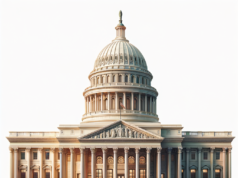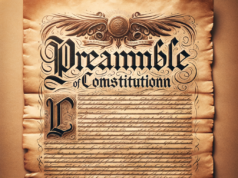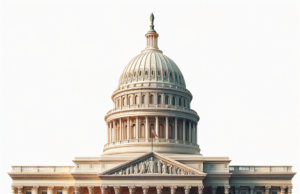Contents
- 1 Understanding Public Gun Policies: A Comprehensive Overview of Current Legislation
- 2 Analyzing the Relationship Between Gun Policies and Crime Rates in Society
- 3 The Role of Public Opinion in Shaping Gun Legislation and Policy Decisions
- 4 Examining the Psychological Effects of Gun Policies on Community Safety Perceptions
- 5 Case Studies: Successful and Unsuccessful Gun Policy Implementations Worldwide
- 6 Future Directions: Balancing Rights and Responsibilities in Gun Policy Reform
The debate surrounding public gun policies has intensified in recent years, with advocates on both sides presenting compelling arguments about the implications of these laws on society. As mass shootings and gun-related violence continue to dominate headlines, understanding the nuances of gun legislation becomes increasingly critical. This article aims to provide a comprehensive overview of current public gun policies, analyze their impact on crime rates, explore the influence of public opinion, examine psychological effects on community safety perceptions, present case studies of various implementations, and discuss future directions for balancing rights and responsibilities in gun policy reform.
Understanding Public Gun Policies: A Comprehensive Overview of Current Legislation
Public gun policies vary significantly across different jurisdictions, reflecting a complex interplay of cultural, political, and social factors. In the United States, for instance, the Second Amendment of the Constitution guarantees the right to bear arms, yet individual states have the authority to enact their own regulations. These can include background checks, waiting periods, restrictions on certain types of firearms, and concealed carry laws. Internationally, countries like Australia and the United Kingdom have implemented stricter gun control measures following mass shootings, leading to significant reductions in gun violence. Understanding these diverse legislative frameworks is crucial for evaluating their effectiveness and societal impact.
Analyzing the Relationship Between Gun Policies and Crime Rates in Society
Research indicates a complex relationship between gun policies and crime rates, with various studies yielding mixed results. Some analyses suggest that stricter gun laws correlate with lower rates of gun violence, as seen in countries with comprehensive background checks and restrictions on high-capacity magazines. Conversely, other studies argue that crime rates are influenced by a myriad of factors beyond gun legislation, such as socioeconomic conditions and law enforcement practices. For instance, states with permissive gun laws may experience lower crime rates due to a higher prevalence of armed citizens deterring potential offenders. This ongoing debate highlights the need for nuanced, evidence-based discussions surrounding the effectiveness of different gun policies.
The Role of Public Opinion in Shaping Gun Legislation and Policy Decisions
Public opinion plays a pivotal role in shaping gun legislation, often swaying policymakers to align with the prevailing sentiments of their constituents. Polls consistently show that a significant portion of the American public supports measures such as universal background checks and restrictions on assault weapons. However, this support can fluctuate in response to high-profile incidents of gun violence, leading to renewed calls for reform. Advocacy groups, both for and against gun control, actively mobilize public sentiment to influence legislative outcomes, demonstrating the power of grassroots movements in the political arena. Understanding the dynamics of public opinion is essential for predicting future legislative trends and potential reforms.
Examining the Psychological Effects of Gun Policies on Community Safety Perceptions
The psychological impact of gun policies on community safety perceptions cannot be understated. Research indicates that communities with stricter gun laws often report higher feelings of safety, as residents perceive a lower risk of gun violence. Conversely, areas with more permissive gun laws may experience heightened anxiety and fear, as the presence of firearms can lead to concerns about potential violence. This psychological landscape is further complicated by media coverage of gun-related incidents, which can amplify fears and shape public perceptions. Understanding these psychological effects is crucial for policymakers, as fostering a sense of safety is integral to community well-being and social cohesion.
Case Studies: Successful and Unsuccessful Gun Policy Implementations Worldwide
Examining case studies of gun policy implementations worldwide reveals valuable lessons about the effectiveness of various approaches. For instance, Australia’s gun buyback program following the 1996 Port Arthur massacre resulted in a dramatic decrease in firearm-related deaths, showcasing the potential success of comprehensive gun control measures. In contrast, countries like Brazil, which have struggled with high rates of gun violence, have seen limited success in implementing effective gun policies due to political instability and corruption. These case studies illustrate that while certain policies can lead to positive outcomes, the context in which they are implemented—cultural attitudes, political will, and social infrastructure—plays a critical role in their success or failure.
Future Directions: Balancing Rights and Responsibilities in Gun Policy Reform
As the discourse around gun policies continues to evolve, future reforms must strive to balance individual rights with societal responsibilities. Policymakers face the challenge of addressing the concerns of gun rights advocates while also responding to the urgent calls for increased public safety. Potential directions for reform may include implementing universal background checks, promoting safe storage practices, and enhancing mental health resources. Additionally, fostering dialogue between opposing sides can lead to more comprehensive and effective solutions that respect constitutional rights while prioritizing community safety. Ultimately, the goal should be to create a framework that acknowledges the complexities of gun ownership and its implications for society.
In conclusion, the impact of public gun policies on society is multifaceted and deeply intertwined with cultural, psychological, and legislative factors. As communities grapple with the consequences of gun violence, understanding the nuances of these policies becomes essential for informed discourse and effective reform. By analyzing current legislation, crime rates, public opinion, psychological effects, and global case studies, stakeholders can work towards a balanced approach that respects individual rights while ensuring the safety and well-being of all citizens. The path forward will require collaboration, empathy, and a commitment to finding common ground in the ongoing debate over gun policy reform.


























